Home >> Basic Concepts >> Social Institutions
Social Institutions
A social institution is a complex, integrated set of social norms organized around the preservation of a basic societal value. Obviously, the sociologist does not define institutions in the same way, as does the person on the street. Laypersons are likely to use the term "institution" very loosely, for churches, hospitals, jails, and many other things as institutions. According to Sumner and Keller institution is a vital interest or activity that is surrounded by a cluster of mores and folkways. Sumner conceived of the institution not only of the concept, idea or interest but of a institution as well. By structure he meant an apparatus or a group of functionaries. Lester F Ward regarded an institution as the means for the control and utilization of the social energy.L.T Hobhouse describe institution as the whole or any part of the established and recognized apparatus of social life. Robert Maclver regarded institution as established forms or conditions of procedure characteristic of group activity.
Sociologists agree that institutions arise and persist because of a definite felt need of the members of the society. While there is essential agreement on the general origin of institutions, sociologists have differed about the specific motivating factors. Sumner and Keller maintained that institutions come into existence to satisfy vital interests of man. Ward believed that they arise because of social demand or social necessity. Lewis H Morgan ascribed the basis of every institution to what he called a perpetual want.
Primary Instituitions
Sociologists often reserve the term "institution" to describe normative systems that operate in five basic areas of life, which may be designated as the primary institutions.
(1) In determining Kinship;
(2) in providing for the legitimate use of power;
(3) in regulating the distribution of goods and services;
(4) in transmitting knowledge from one generation to the next; and
(5) in regulating our relation to the supernatural.
In shorthand form, or as concepts, these five basic institutions are called the family, government, economy, education and religion.

The five primary institutions are found among all human groups. They are not always as highly elaborated or as distinct from one another but in rudimentary form at last, they exist everywhere. Their universality indicates that they are deeply rooted in human nature and that they are essential in the development and maintenance of orders.
The secondary institutions derived from Family would be
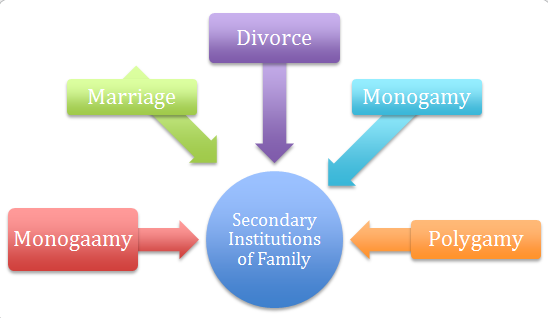
The secondary institutions of economics would be
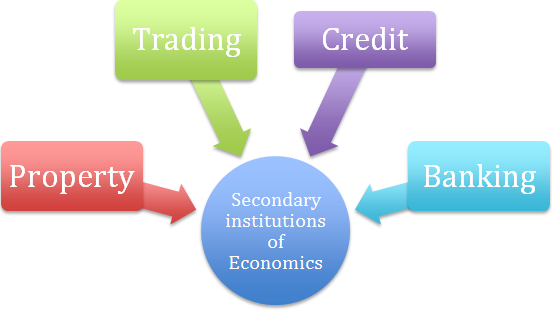
The secondary institutions of Religion would be
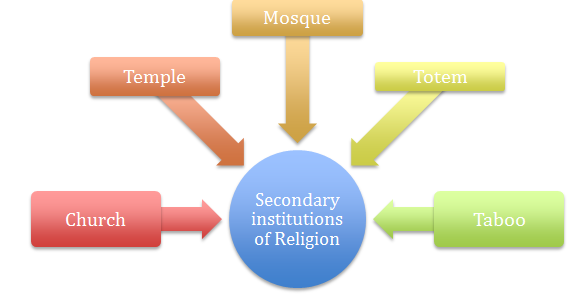
The secondary institutions of education would be
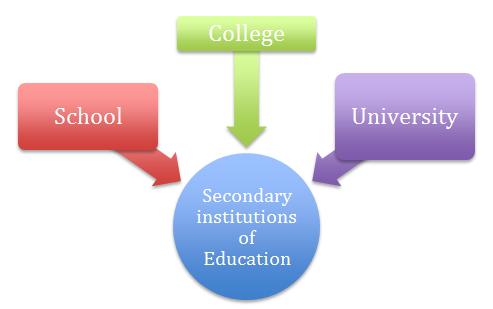
The secondary institutions of State would be
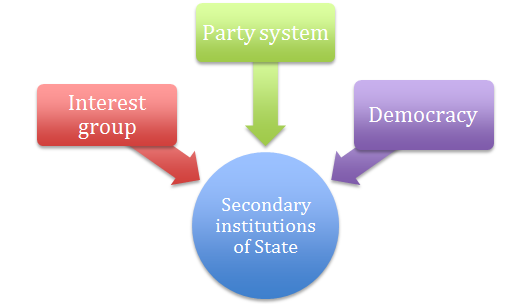
Sociologists operating in terms of the functionalist model society have provided the clearest explanation of the functions served by social institutions. Apparently there are certain minimum tasks that must be performed in all human groups. Unless these tasks are performed adequately, the group will cease to exist. An analogy may help to make the point. We might hypothesize that cost accounting department is essential to the operation of a large corporation. A company might procure a superior product and distribute it then at the price that is assigned to it; the company will soon go out of business. Perhaps the only way to avoid this is to have a careful accounting of the cost of each step in the production and distribution process.
An important feature that we find in the growth of institutions is the extension of the power of the state over the other four primary institutions. The state now exercises more authority by laws and regulations. The state has taken over the traditional functions of the family like making laws regulating marriage, divorce, adoption and inheritance. The authority of state has similarly been extended to economics, to education and to religion. New institutional norms may replace the old norms but the institution goes on. The modern family has replaced the norms of patriarchal family yet the family as an institution continues. Sumner and Keller has classified institutions in nine major categories .He referred to them as pivotal institutional fields and classified them as follows:


 |
© 2024 Sociology Guide.Com |
 |













